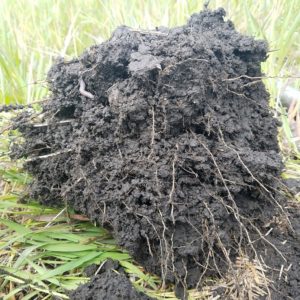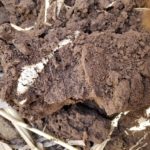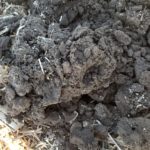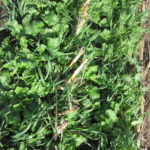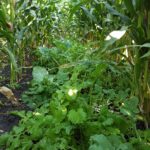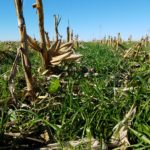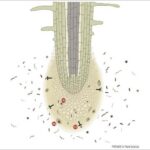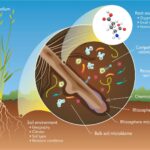Our partners have provided scientific information from a whole host of areas of research important to soil health. Research that relates to development, testing, evaluation and production and it's related fields will be shared here to assist you in implementing and increasing your overall soil health.
What is soil health?
The ability of the soil to function.
Soil has 5 main functions:
- Regulating water-allows infiltration and detention
- Sustaining life-plants and soil organisms
- Filtering and buffering-the soil particles and organisms filter, buffer, degrade, and immobilize potential pollutants
- Cycling nutrients-the soil stores, transforms, and cycles nutrients including carbon, nitrogen, phosphorous, and others
- Physical support-provide structure and support for plants, soil organisms, and above ground organisms including sustaining buildings, roads, and machinery.
Each soil has their own inherent capabilities and by managing the soils to optimize it’s functions, the health of the soil will increase.
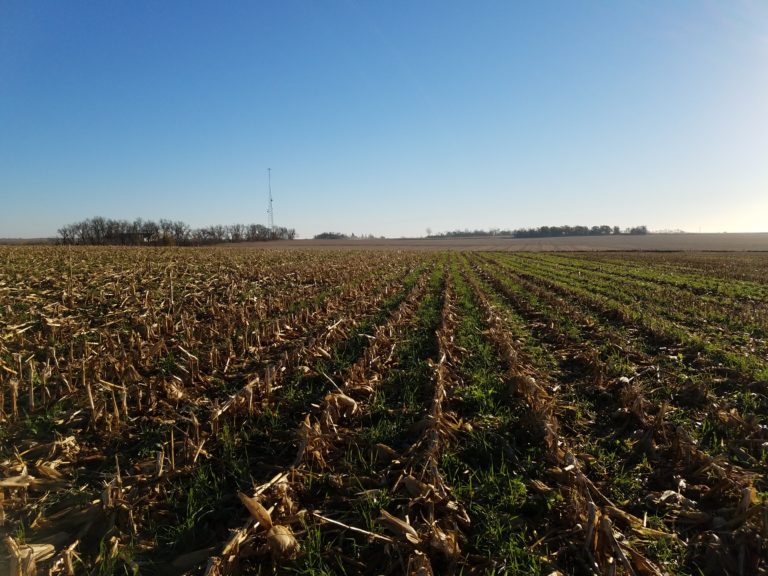
The practice of agroforestry, from a broad perspective, is farming with trees, but looking at it more closely, it’s a land management system that capitalizes on the biological interconnectedness of trees, crops and livestock to create thriving ecosystems.
While it’s starting to gain wider appeal, agroforestry is not new and was one of the earliest forms of agriculture, with Indigenous people practicing these systems as part of their traditional ecological knowledge for generations.
Currently, agroforestry and its ability to sequester carbon has made the practice at the forefront of sustainable agricultural systems that can not only help the world reach climate goals, but also diversify income for farmers, as well as provide opportunities for food security, soil protection, wildlife habitats, and community empowerment.
So how exactly does it work? First, some quick facts, before we break it down.
Quick Facts
- Agroforestry methods protect soil, animals, crops, and homes from extreme weather, while also improving water quality.
- It can be good for local economies by producing useful products such as: food, fiber, wood, floral and medicinal botanical products.
- It improves pollinator habitat. Plant pollination by animals is integral for healthy ecosystems with 85% of the world’s flowering plants dependent on it for pollination.
- It’s a good mitigator for climate change as these methods help sequester greenhouse gas emissions. For more information go to: https://www.ecowatch.com/
agroforestry-explainer.html
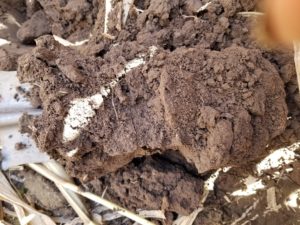 Soil compaction on cropland can be a real concern for producers. Compaction is caused by applied pressure to soil particles which displaces the space between soil particles, known as the pore space. This is soil structure degradation and adversely affects all the chemical, physical, and biological functions of the soil.
Soil compaction on cropland can be a real concern for producers. Compaction is caused by applied pressure to soil particles which displaces the space between soil particles, known as the pore space. This is soil structure degradation and adversely affects all the chemical, physical, and biological functions of the soil.
Once the pore space is reduced, the area is greatly restricted for air, water, and nutrients to move into or through the soil profile. This also makes it difficult for crop roots to penetrate the soil, plants to find water and nutrients in the soil, and plant emergence. In production agriculture, compaction is a common side effect of heavy machinery making multiple passes across the same acres, multiple times a year, and applying farming practices like planting and driving on wet soils, grain cart traffic, and excessive tillage.
Not only does compaction impact crops ability to establish, it also increases runoff and erosion because water doesn’t infiltrate into the soil profile. If water doesn’t enter neither can roots or nutrients our crops need. This causes ponding of water not allowing the water to infiltrate which reduces oxygen to plant roots and makes nitrogen unavailable to crops.
Compaction can be greatly reduced with the adoption of soil health principles, such as reducing or eliminating tillage passes, growing cover crops, increasing organic matter, growing small grains, converting to a forage system, and controlling field traffic. Cover crops, small grains, and perennial vegetation will protect the soil surface and break up compaction with their root growth. The additional benefits of these plants are more numerous roots per square foot while adding diversity to further reduce compaction. Practicing patience by staying off fields that have saturated soils will help prevent additional soil compaction and can also be a valuable technique.
Learn more from the University of Minnesota Extension.
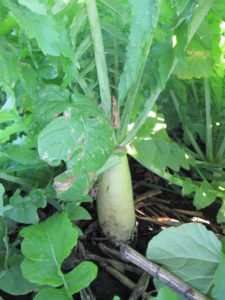 Cover crops are plants you grow to obtain an objective to provide soil and/or crop benefits. There are a variety of cover crops that can be grown in Minnesota to fix nitrogen, reduce compaction, increase infiltration, bring lost nutrients back to the rooting zone, reduce erosion, fumigate the soil, suppress weeds, increase organic matter, and others. Cover crops can be utilized in any crop rotation by choosing the right species, seeding timing, and termination method.
Cover crops are plants you grow to obtain an objective to provide soil and/or crop benefits. There are a variety of cover crops that can be grown in Minnesota to fix nitrogen, reduce compaction, increase infiltration, bring lost nutrients back to the rooting zone, reduce erosion, fumigate the soil, suppress weeds, increase organic matter, and others. Cover crops can be utilized in any crop rotation by choosing the right species, seeding timing, and termination method.
Cover crops provide protection of the soil surface to reduce erosion having, help to build soil structure that allows better infiltration, reduction of compaction, and increases crop rooting efficiency.
Cover crops also build soil organic matter to increase nutrient cycling efficiency, provide more nutrients available to plants, reduce erosion, increase infiltration, and hold more plant available water.
Growing cover crops provides diversity to your soil to help break pest cycles, provide an increased variety of food to soil organisms to increase populations and diversity of organisms.
By increasing the amount of time living plants are growing, you are bringing more carbon into your soil to increase organic matter and reducing erosion by having the soil covered during critical periods when there typically isn’t a crop growing.
Cover crops can reduce compaction by their growing roots breaking through hard pans throughout the soil while feeding soil organisms. Both the roots and organisms perform tillage in the field by breaking through compaction and cycling residue and nutrients throughout the soil profile.
Cover crops can also provide forage for livestock and the manure, urine, saliva, and milk feed the soil organisms providing soil benefits while getting feed value.
Determining which cover crops to use when and where can seem daunting but first identifying your objectives will help identify which species to consider. Looking at your seeding window (corn V4-V6, after silage chopping, etc), (soybeans leaf drop, after harvest), (small grains and canning crops after harvest), (sugar beets before and after growth), will help determine what cover crops will provide a benefit and flourish in those circumstances.
Some basic cover crop mixes, mixes for certain objectives, herbicide info, and an inventory sheet:
Some easy to use cover crops and a peak at some of their benefits:
- Oats-form mycorrhizal fungi associations, easy to manage, and reduces erosion
- Radish/turnip/canola-fumigate the soil against bacteria, fungi, insects, nematodes, and weeds, breaks compaction, may overwinter
- Cereal rye (winter rye)-reduce leaching of N between 45%-90%, are great weed suppressors, and reduces erosion
- Annual rye-excellent shade tolerance for interseeding and reduces erosion, may overwinter
- Buckwheat-makes phosphorous plant available in the soil
- Field peas-poor host for the soybean cyst nematode, fixes nitrogen, good forage
There are many other species that can be a good fit in your management, a good source of info is your local soil health group where they are available or your local NRCS/SWCD office. NRCS has a fantastic spreadsheet listing each cover crop species and how well it does on several factors some of which include shade tolerance, nitrogen source, compaction reducer, crude protein, and others.
Soils are similar to the human body with nutrient requirements, organisms living inside to provide necessary functions, and require management to properly function. Having a diet of two foods will not provide our bodies with adequate varieties of nutrients, minerals, or benefit our digestive system. Eating a variety of foods provides our bodies with nutrients, minerals, benefits our digestive systems, and feeds a variety of organisms that live inside us that are necessary for our body functions. Increasing the variety of what is grown in your fields provides the same benefits to your soils which in turn provides benefits to the crops grown. Different plants provide different things to soil organisms and the more variety of plants grown, the more diversity of soil organisms that are present to complete functions in the soil to benefit crops. Continual raising of the same crops leads to depletion of certain nutrients in the soil, by adding additional species, it allows the release and absorption of different nutrients to balance the system.
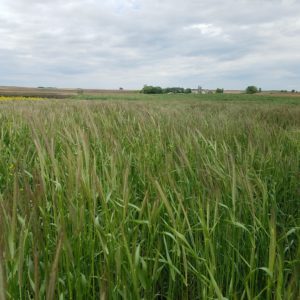
Increasing diversity by adding another crop also helps to break pest cycles reducing damage to crops and pesticide inputs. Minnesota farmers that have implemented 4 or 5 year rotations with corn, soybeans, and wheat have also found economic benefits of reduced inputs, increased soil health leading to an increase in nutrient cycling, reduction of pesticides, and reduction of tillage.
Additional crops to add to your rotation depend on your location, markets available, and logistics of equipment but some options include oats, wheat, canning crops, rye, barely, sugar beets, cover crops for seed, hemp, cover crops for forage, and perennials for forage.
Each year conventional tillage producers can lose the thickness of a dime of soil over their entire field due to erosion. This equates to 5 tons/ac of valuable topsoil farmers need to grow crops each year. Imagine stacking 50 dimes on top of each other, one dime for each year you have farmed the land. That amounts to tons of eroded topsoil that ends up in our States’ water bodies. Soil health practices can significantly minimize or reduce wind, gully, and sheet & rill erosion.
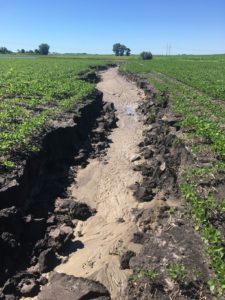
The last few growing seasons in Minnesota have been plagued with rain and wet conditions. Not the all-day, light soaking rains, but heavy downpours dumping multiple inches of rain in the span of a few short hours. These rains can cause devastating effects on the amounts of soil leaving the fields.
It becomes incredibly apparent while driving Minnesota back roads that those farmers employing soil health practices have fared the best in curbing erosion caused by these extreme rain events. Soil erosion starts with the raindrop. Rain falls to the ground at a rate of about 20 mph. This force detaches individual soil particles making them susceptible to movement by water and wind. Cover crops and crop residue keep the soil from being exposed to rain and wind.
Another big benefit to soil health practices is slowing the effects of gully erosion due to concentrated flows. The root structures and erect standing stems from previous crops, as well as growing cover crops, take the power and slow the velocity of concentrated flows. Roots also hold soils together preventing erosion. Wind erosion is also reduced by increased residue and growing cover crops. The power of driving winds during the winter months is noticed with the black snowdrifts in roadside ditches that we call “snirt”.
Improved soil condition is also a factor, which lessens soil erosion. Soil health practices, such as reduced tillage and cover crops, increase soil organic matter. Soil organic matter is the fraction of the soil that is made up of plant tissues in various stages of decomposition. This means more water holding capacity for your soils. Every one percent increase in OM amounts to another 24,500 gallons of water per acre that the soils can hold, verses surface runoff, which causes soil movement.
Microbes, which are found in abundance in healthy soils, also play a role in decreasing erosion. When residues cover fields and cover crops are growing, microbes flourish. These microbes excrete compounds that actually hold soil particles together making them less susceptible to erosion. Microbial movement, along with worms moving through the soil profile creates air spaces making soils able to absorb more water during rain events. Tile also functions much better when producers employ soil health practices on their lands. Water infiltrating the soil profile is a much better option than water running across the surface carrying the soil with it.
For more detailed information on soil health and erosion please visit the USDA's Natural Resources Conservation Service.
Soil health isn’t limited to traditional production agriculture, soil health management includes all land uses including forestry. Minnesota has a thriving timber harvest sector as well as orchards and agroforestry. Managing your woodlands to protect, maintain, and increase soil health provides for a healthy, functioning system as well as providing benefits for the trees.
In timber harvest, planning and utilizing access trails and landings to reduce excessive traffic throughout reduces compaction and rutting of the soils. Placing these in low slope areas, avoiding wet, fine textured soils, and high organic matter areas also benefit ease of use. When compaction occurs, runoff increases and reduces rooting and oxygen available to plants. Retaining as much tops and unmarketable wood provides carbon back in the soil and planting covers after harvest on disturbed areas provides erosion protection and allow to have the growing plants break up compaction.
Maintaining at least 50% of ground cover will reduce erosion potential by protecting the soil surface. Keeping residue on the soil surface will protect the soil and ensure nutrients stay in place where they are needed for production.
Fire can be a management tool in forestry to maintain and/or improve production. Fast, light fires burn off the least amount of residue and soil organic matter allowing necessary nutrients to remain. Also, slow, intense burns can cause the soil to repel water (hydrophobic) and lead to an increase in soil erosion and the lack of moisture to go into the soil profile for roots.
Orchards provide opportunities to protect soil and build nutrients. Covers between rows protect the soil surface from wind and water erosion, reduce weeds, protect against compaction, and can host beneficial organisms. Depending on what tree and shrub species are grown, the covers will need to be carefully chosen to ensure they don’t attract pests that can injure the crop. Talk with your local conservation office to get specific information for your site and check out Washington State Extensions resources of orchard floor management treefruit.wsu.edu/orchard-management/orchard-floor-management/
Agroforestry provides an opportunity for forestry and agricultural production which includes agroforestry, forest farming, windbreaks, and more! Check out great information from the University of Minnesota Extension.
When you’re looking to introduce new crops to your rotation, a careful look at your herbicide program is warranted to ensure you’re not spending your money on seed that won’t be successful. Pennsylvania Extension, the University of Wisconsin Extension, and Iowa Extension have put together excellent resources on herbicide carryover pertaining to cover crops and grazing. Pennsylvania and Wisconsin focus on cover crops and small grains while Iowa has a great publication on the effects of grazing those cover crops. Always follow label instructions.
Additional Resources:
Soil infiltration rates measure the speed in which water enters the soil profile and is often measured in inches per hour. Soil ability to move water, air, and nutrients is directly linked to its infiltration rate. Minnesota has diverse landscapes ranging from coniferous and bog swamps in the north to prairie pothole in the south, and correspondingly the historic soil infiltration rates vary greatly.
Water entering the soil profile too slowly can result in erosion, water ponding on the surface causing insufficient soil moisture in the soil profile available to crops and plants. Management of water infiltration into the soil profile can greatly improve the growth of crops and soil erosion.
The quickest way to improve soil infiltration is to try and mimic the historical landscape condition; soil covered the entire growing season with green diverse cover, large and small ruminant mammals roaming the landscape, and little to no soil disturbance. Sounds impossible in production agriculture to mimic mother nature, but it can easily be achieved by applying reduce tillage practices like no-till/strip-till, diverse cover crop rotation, designated field roads to controlling traffic on crop fields, and use of multi species cover crops, just to name a few.

Guides for Educators
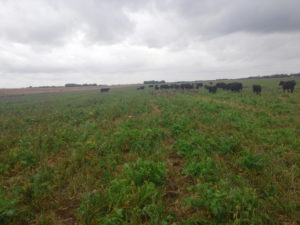 Livestock grazing on the land provides several soil benefits. Grazing crop residues, cover crops, annual or perennial pasture, or even on set aside lands can invigorate stands and the soil by feeding it organic matter from excretions and a variety of biological compounds from manure, urine, saliva, and milk. Providing these additional compounds is similar to eating a varied diet to nourish the body.
Livestock grazing on the land provides several soil benefits. Grazing crop residues, cover crops, annual or perennial pasture, or even on set aside lands can invigorate stands and the soil by feeding it organic matter from excretions and a variety of biological compounds from manure, urine, saliva, and milk. Providing these additional compounds is similar to eating a varied diet to nourish the body.
Grazing cover crops and covers also provides an economic benefit of feed that doesn’t need to be mechanically harvested and provides the even distribution of manure and reducing cleaning, storing, and spreading. There are several methods to grazing covers to provide benefits to the livestock and the soil including rotational grazing and mob grazing which involves sectioning off paddocks and moving the livestock through based on forage height and vigor.
Sustainable Farming Association has excellent resources and staff knowledge on grazing to help you determine how it can fit into your management.
No livestock? No land to graze? No problem!
There is a tool called the Cropland Grazing Exchange and Midwest Grazing Exchange allows farmers to find each other to get livestock out on their land and for livestock owners to find more land to graze. They're a free service and easy to use!
Nutrient Source
Nutrients are a limiting factor in traditional cropping systems, many producers rely on commercial fertilizers to provide the needed nutrients. Cover crop mixes can be tailored to supply nutrients, such as nitrogen, to your fields. If nutrient fixation (the production of nitrogen by a plant) is desired the following cover crop species should be utilized: Alfalfa, Clover, Cowpea, Pea (field/winter), Soybeans, Sweetclover, Hairy vetch. If nitrogen fixation is a primary goal for your operation, grazing is not recommended as it can reduce the vigor of the cover crop thus reducing the amount of nitrogen generated.
Green manure is the idea of growing a crop that will help supply nutrients to a cash crop when it is later incorporated into the soil. There has been limited university studies completed to show the time frame between when a cover crop is incorporated to when the nutrients are available for the cash crop. The graph below shows one studies results here in Minnesota where they found a clear spike of nutrients becoming available in the soil between 15-35 days after incorporation.
Ronghao Liu, M. Scott Wells & Axel Garcia y Garcia (2019): Cover crop potential of winter oilseed crops in the Northern U.S. Corn Belt, Archives of Agronomy and Soil Science, DOI: 10.1080/03650340.2019.1578960
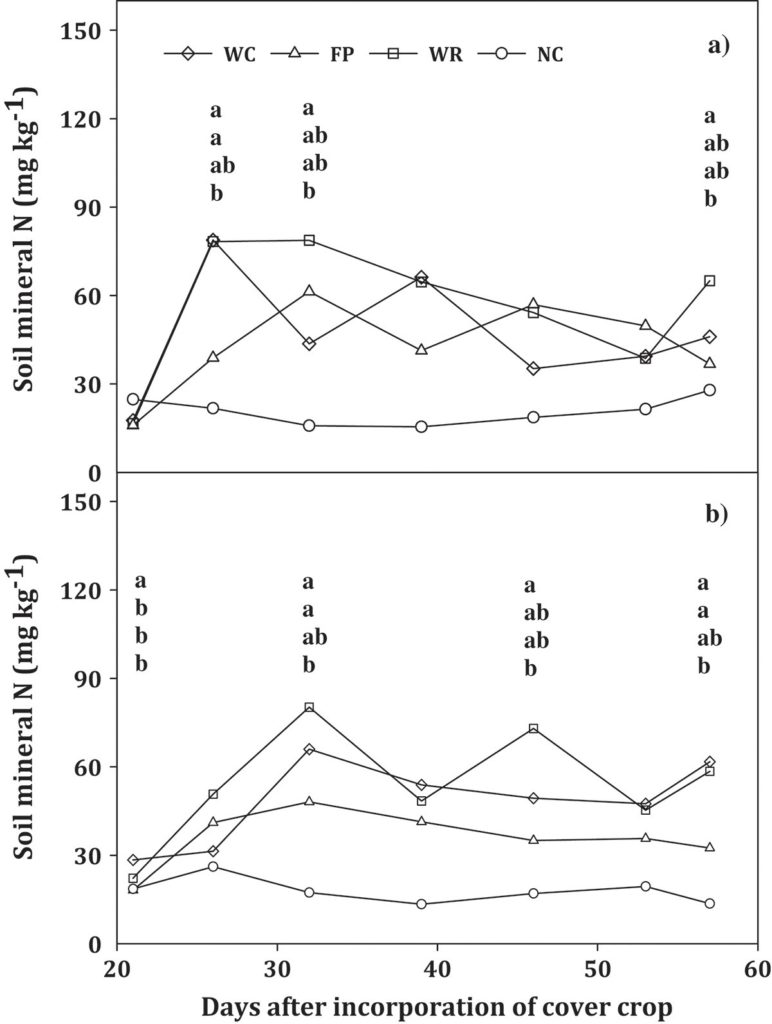
Letters above sampling dates indicated treatments that were significantly different (P < 0.05) on which significant differences existed. WC = winter camelina, FP = field pennycress, WR = winter rye, NC = no cover crop.
Nutrient Reduction
Cover crops can also be used to utilize excess nutrients in the soil, this reduces the nutrients that are available to leave the crop fields through leaching and erosion. If this is a management goal select cover crop species for their ability to effectively utilize nutrients such as; Barley, Oats, Rye (winter/annual), Triticale, Turnip and Wheat among others. Establish cover crops as soon as practical prior to or after harvest of the production crop. (i.e. before or after harvest). This will maximize the amount of nutrient collection.
When appropriate for the crop production system, mowing certain grass cover crops (e.g., sorghum-sudangrass, pearl millet) prior to heading and allowing the cover crop to regrow can enhance rooting depth and density, thereby increasing their subsoiling and nutrient-recycling effectiveness. If the cover crop will be harvested for feed (hay/balage/etc.), choose species that are suitable for the planned livestock, and capable of removing the excess nutrients present. Terminate the cover crop as late as practical to maximize plant biomass production and nutrient uptake. Practical considerations for termination date may include crop insurance criteria, the amount of time needed to prepare the field for planting the next crop, weather conditions, and cover crop effects on soil moisture and nutrient availability to the following crop.
To find more information on species that will either fix nitrogen or collect excess nutrients visit the Midwest Cover Crops Council Selector Tools.
Integrated Pest Management (IPM) is a science-based, decision-making process that identifies and reduces risks from pests and pest management related strategies. IPM coordinates the use of pest biology, environmental information, and available technology to prevent unacceptable levels of pest damage by the most economical means, while minimizing risk to people, property, resources, and the environment.
(USDA IPM Roadmap, revised 2013)
Research on the use of Cover Crops and suppression of pests:
Suppressing soybean diseases with fall planted cover crops
The impacts of fall cover crops on diseases in spring planted soybeans were conducted at 6 locations in Illinois. Soybean stand establishment was highest in rye plots inoculated with Rhizoctonia solani, as compared to the fallow plots, and Rhizoctonia root severity rot was lowest in the rye plots. Counts of soybean cyst nematodes were reduced in rye and rape plots at several locations. Greenhouse assays of field soils showed reductions of Rhizoctonia root rot and sudden death syndrome in rye and rape soils. No differences in other pathogens or microbial communities were detected among soils from the cover crop treatments.
Wen, L.; Hartman, G. L.; Eastburn, D. M. 2012. Suppression of soybean diseases through the use of cover crops. Phytopathology 102:134.
There are resources available to you to help with technical questions and planning as well as financial assistance to implement soil health practices. These resources were created for you and staff are employed to provide you these services. There are also local soil health groups around the state that provide opportunities to talk with producers implementing soil health practices, have field days and meetings, and may have testing opportunities to measure progress of your soil.
The Natural Resources Conservation Service (NRCS) offers programs through the Environmental Quality Incentives Program (EQIP) and Conservation Stewardship Program (CSP) to implement soil health practices such as cover crops, reduced tillage, nutrient management, pest management, prescribed grazing, converting to a forage system, and more. Technical and financial assistance is available to implement these practices. The Soil and Water Conservation Districts and Watershed Districts also offer technical assistance while some also have financial assistance for soil health practices.
Find your local NRCS field offices: https://www.nrcs.usda.gov/wps/portal/nrcs/mn/contact/local/
MN NRCS Program Website: https://www.nrcs.usda.gov/wps/portal/nrcs/mn/programs/financial/
MN SWCD local field offices: https://www.maswcd.org/SWCDs_On_The_Web/swcds_on_the_web.htm
MN Watershed Districts: https://www.mnwatershed.org/watershed-district-map
Local Soil Health Groups:
- Becker SWCD: https://www.co.becker.mn.us/dept/soil_water/
- Brown SWCD: http://brownswcdmn.org/
- Carlton SWCD: https://carltonswcd.org/
- Chisago SWCD: http://chisagoswcd.org/
- Dodge SWCD: https://dodgeswcd.org/
- Faribault SWCD: http://www.faribaultcountyswcd.com/
- Fillmore SWCD: http://www.fillmoreswcd.org/
- Freeborn SWCD: https://www.freebornswcd.org/
- Goodhue SWCD: https://www.goodhueswcd.org/
- Grant SWCD: https://www.grantswcd.org/
- Houston SWCD: http://www.co.houston.mn.us/RRSWCD/RRSWCD.aspx
- Mower SWCD: https://mowerswcd.org/
- Olmsted SWCD: https://www.co.olmsted.mn.us/pw/oswcd/Pages/default.aspx
- Ottertail SWCD: https://ottertailcountymn.us/content-page/soil-and-water-conservation-districts/
- Pope SWCD: http://popeswcd.org/
- Rice SWCD: http://www.riceswcd.org/
- Rock SWCD: http://www.rockswcd.org/
- Scott SWCD: https://www.scottswcd.org/
- Stearns SWCD: https://www.stearnscountyswcd.net/
- Steele SWCD: https://www.steeleswcd.org/
- Stevens SWCD: https://www.stevensswcd.org/
- Wabasha SWCD: https://wabashaswcd.com/
- Waseca SWCD: http://www.wasecaswcd.org/
- Winona SWCD: https://winonaswcd.org/
MN Ag Water Quality Certification Program: https://www.mda.state.mn.us/environment-sustainability/minnesota-agricultural-water-quality-certification-program
Sustainable Farming Association: https://www.sfa-mn.org/
Minnesota Office for Soil Health: https://www.wrc.umn.edu/mosh
Land Stewardship Project: https://landstewardshipproject.org/
Soil Health Partnership: https://www.soilhealthpartnership.org/
Keeping the soil covered, one of the Soil health principles, is key. Leaving the soil covered in the form of crop residue or a living cover such as cover crops is a great way to address issues such as; sheet, rill and wind erosion, organic matter levels and soil quality, reduced energy (from the reduced tillage to leave surface residue), and reduced soil temperature.
Residue should be evenly distributed over the entire field. Having a buildup of residue, more of an issue with post harvested residue, can lead to issues with poor germination and the inability to physically plant into so much residue. Care should be taken to flail the chaff as it comes out the combine.
Through the use of covers, erosion can be greatly reduced. Just an increase in 10% cover can reduce the amount of wind lost soil particles by 30%.
Economics of it All
Keeping ledgers, filing receipts, trying to locate that sales slip, the joys of financial management! Everyone has their method to tracking expenses and income, it's always nice to have a family member that is willing to help. Comparing different fields or management strategies financially usually involves several sources, a calculator, and a scratch sheet of paper. One easy option to compare expenses, income, and profitability is using a spreadsheet to track those items. You can be as specific as you want or lump all expenses per acre under one item. This spreadsheet was helpful to Minnesota Farmers looking at the changes they made to see how it really stacked up financially. There are programs and software out there but below is a quick and easy option.
Expense and Income Spreadsheet
Social
Quality of life and profitability are also important factors in every operation. Satisfaction from work, having time for family, friends, and hobbies, and feeling generally content are some indicators of the quality of life. Feeling content doesn't mean not feeling the fire and desire to learn and do more, that is the appetite to live and grow. Having people around you that understand your challenges and provide positive support and/or are there to let you vent your frustrations are important. Having others to talk about options, bounce ideas off of, and find resources are very valuable-neighbors, farmers in your area, a local soil health group, or the Coalition mentor group can provide those resources. If problems mount higher and higher every day without a feeling of hope, there are numerous options to talk to others, in the privacy of your home, field, or tractor.
Minnesota Farm and Rural Helpline
The helpline (833.600.2670) 24/7 https://www.mda.state.mn.us/about/mnfarmerstress
Farm Aid
If you need to talk to someone directly, we are here to listen. You can call our farmer hotline at 1-800-FARM-AID (1-800-327-6243). Farmer Services staff answer the hotline Monday through Friday from 9:00 a.m. to 5:00 p.m. eastern time. https://www.farmaid.org/our-work/resources-for-farmers/farmer-resource-network/
National Suicide Prevention Lifeline
We can all help prevent suicide. The Lifeline provides 24/7, free and confidential support for people in distress, prevention and crisis resources for you or your loved ones, and best practices for professionals 1-800-273-8255 https://suicidepreventionlifeline.org/
National Farm Medicine Center
MN Farm Advocate Program--(in-state) 800-967-2474 ----(out-of-state) 651-296-1484
Soil is full of life. Soil fauna, soil biota, and the life in the soil is a collective term that encompasses all organisms that spend a signification portion of their life cycle within the soil profile and make up its biology. Healthy soil is full of biological life like microorganisms such as bacteria, fungi, amoebae, and paramecia. Soil biology is the ecology in the soil profile.
Only 5% of what is produced by green plants is consumed by animals, but the 95% is consumed by microorganism. Thus, soil biology is a crucial system to the soil function and its health.
Most of the biology in the soil is microscopic, even though the biology in the soil is tiny, its key to nutrient cycling in the soil and a healthy soil environment. Production agriculture is dependent on soil for outputs. Low yields often are a result of unhealthy soil biology.
Soil biology impacts nutrient cycling in the soil, for both nutrients found naturally in soil, as well as commercial inputs. Using cover crops within a crop rotation is a way to add a ready food source for soil biology, without having to change the crop rotation. Just like humans our soil biology needs food daily, not seasonally when cash crops are growing.
Watch this video of soil living biology, soil mite and soil micro fungi under magnification!
Principles of Soil Health
- Context
Consider the context of our own farm when applying the soil health principles. - Minimize Soil Disturbance
Tillage breaks down soil aggregates and facilitates the consumption of biological glues that hold the aggregates together reducing the capacity to infiltrate, filter, and store water. - Armor Your Soil
Keep the soil covered at all times. This protects it from eroison, moderates soil temperatures, reduces water evaporation, suppresses weed growth, and feeds the biology. - Plant Diversity
Expand crop rotations, use diverse cover crop mixes, this will increase plant, insect, wildlife, and biological diversity. - Keep a Living Root
- Keeping a living root in the soil as long as possible feeds the soil biology which feeds our plants.
- Integrate Livestock
Plants and livestock have a synergistic relationship. When livestock graze on plants, photosynthesis increases and releases root exudates that feed the biology and supplies nutrients for regrowth.
Soil is comprised of roughly 50% soil, 25% air, and 25% water. Minnesota has a very interesting variety of soils shaped by different glacial advances depositing 4 major parent materials and then having different climate regimes shape the soils we have today (Des Moines, Rainy, Superior, and Wadena lobes).
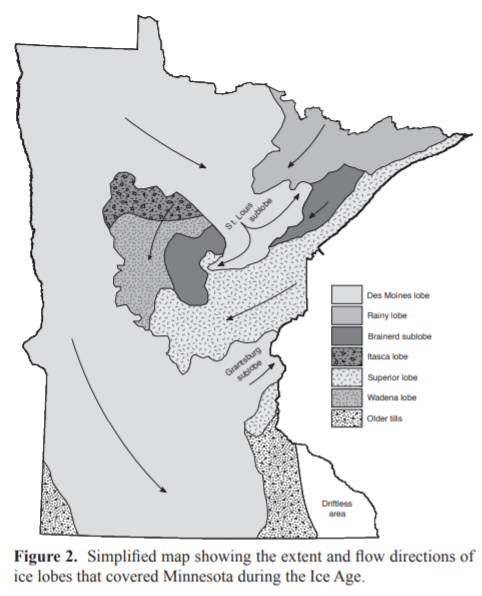
Minnesota at a Glance is produced by the Minnesota Geological Survey University of Minnesota 2609 W. Territorial Road St. Paul, MN 55114 B.A. Lusardi, 1994; revised May, 2017 by E.L. Dengler
© 2017 by the Regents of the University of Minnesota.
Due to different parent materials and climate, soil organic matter varies around the state. Because of these factors, there are inherent attributes that can’t be changed but management can improve levels of organic matter. Areas of the state with prairie typically have higher amounts of organic matter and have deeper topsoil (A horizons) because of the thick, fibrous roots of grasses and forbs that die back annually replenish the organic matter and the forested areas of the state with lower organic matter levels and more shallow topsoil because the roots of trees lack the annual die back.
Organic matter in soil helps to provide soil structure, food for soil organisms, increases nutrient availability to plants, increases nutrient cycling efficiency, retains moisture, reduces compaction, reduces surface crusting, and increases water infiltration which reduces soil erosion. Soil organic matter is not only beneficial to our natural ecosystems and processes, it is also highly favored for production agriculture.
To increase soil organic matter, first we must reduce erosion, if our soil is eroding we can’t build organic matter. To reduce erosion and build organic matter, the soil surface should be protected with residue or living plants (cover crops). Also increasing water infiltration reduces erosion. Soil disturbance burns organic matter creating a flush of bacteria activity that rapidly consumes organic matter and provides excess oxygen to the soil to further decompose organic matter losing nutrients that would be available to crops. Reducing tillage by one pass a year will provide a benefit and further decreasing soil disturbance will allow the organic matter to remain and provide nutrients to crops while building the soil.
Organic matter helps to build the soil structure which are the soil aggregates that hold the soil together and provide pores to allow air and water to move through the soil so that precipitation that falls on that land infiltrates instead of running off taking soil and nutrients with it. By building soil structure and having pores in the soil, the plant roots can follow the pores and channels so they don’t have to work so hard to expand the rooting system making the growth more efficient. By providing food to soil organisms with organic matter, a higher population and diversity of soil organisms is possible. With more soil organisms brings an increase in efficiency for plants because the soil organisms and plants work together to cycle nutrients making them plant available. Plants exude sugars through their roots like ringing a dinner bell to the soil organisms telling them they are there. The soil organisms in turn eat the sugars, defecate, consume each other, die and in turn, cycle nutrients and make them plant available around the plant roots.
1% of organic matter can provide 25lbs of nitrogen, 5.5 lbs of phosphorus, and 2.5 lbs of sulfur that is plant available annually.
1% of organic matter can hold 22,500 gallons of water of which 16,500 gallons are plant available which helps to reduce erosion and hold onto water during the dry months of the year for plants to access.
Methods to increase soil organic matter include reducing tillage, protecting the soil surface with living or dead residues, cover crops, use plants with high carbon to nitrogen ratio, small grains, perennial crops, manure, and increase diversity.
A good resource of info:
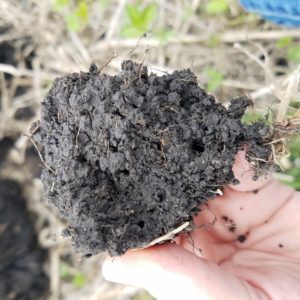 Soils are approximately 45% mineral, 50% air and water, with the remaining being organic matter. To have 50% of the area under our feet to be air and water, the soil needs to have pore space and not be compacted. This requires that the soil has structure-to allow the soil particles to have small and larger aggregates that are held together with pore space in between.
Soils are approximately 45% mineral, 50% air and water, with the remaining being organic matter. To have 50% of the area under our feet to be air and water, the soil needs to have pore space and not be compacted. This requires that the soil has structure-to allow the soil particles to have small and larger aggregates that are held together with pore space in between.
When the soil has aggregates, it allows precipitation to infiltrate, air to circulate, nutrients to cycle, and roots to easily penetrate the soil. Soil structure develops over time by reducing disturbance and having plants growing. This allows the soil organisms to interact with roots, build their homes, tunnel, and build the soil structure by bonding it together with glomalin-a glue like substance produced from mycorrhizal fungi. These aggregates are strong and resistant to erosion and dissolving in water providing you with a sturdy and resilient growing medium. Mycorrhizal fungi thrive in undisturbed soils and form large networks underground to expand the rooting area of plants beyond plant capabilities allowing an extended reach of nutrients provided to the plants.
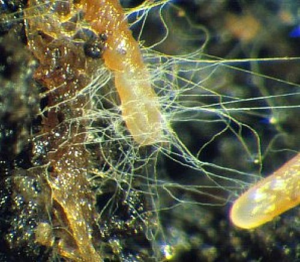
When soil lacks structure, soil is in individual soil particles and are able to move freely with wind and water and will find their way into surface cracks, plugging up the surface, sealing it off, and reduce infiltration leading to runoff and ponding of water. Soil lacking structure does not stand up against saturation and falls apart resulting in reduced pore space, reduced air space, and an increase in compaction. Soil structure also improve trafficability providing a strong medium to withstand traffic.
To build your soil structure, first protect the surface with living or dead plants. Reduce disturbance-every tillage pass breaks soil structure and mycorrhizal fungi and sets back the building of structure. To speed up the development of structure incorporate small grains, forages, and/or cover crops.
